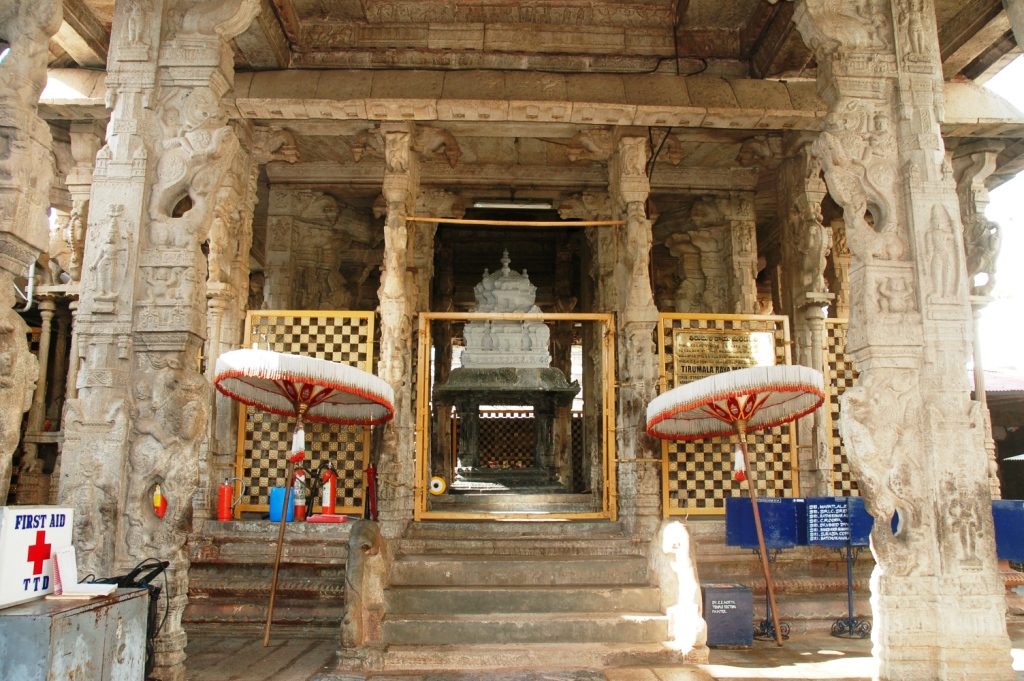Mandapams of Tirumala The lush green forests of Seshachala house, Sri Venkateswara Swamy, who is also revered as Perumal, Venkatachalapati, Tirumalesa, Govinda, Balaji, Srinivasa and many more names. The ancient temple of Lord Venkateswara in the hill shrine of Tirumala is an amazing complex of history, culture, and traditions. Almost every brick speaks volumes about Read More
Tag: Tirumala Raya Mandapam
Next to the Rangamantapam and at a distance of 12 feet from the east prakaram wall of the inner gopuram, is another mantapa measuring 40 feet east to west and about 80 feet north to south. This is known as Tirumala Raya mandapam or Anna Unjal mandapam
Tirumala Raya Mandapam
Mandapams of Tirumala The lush green forests of Seshachala house, Sri Venkateswara Swamy, who is also revered as Perumal, Venkatachalapati, Tirumalesa, Govinda, Balaji, Srinivasa and many more names. The ancient temple of Lord Venkateswara in the hill shrine of Tirumala is an amazing complex of history, culture, and traditions. Almost every brick speaks volumes about Read More

